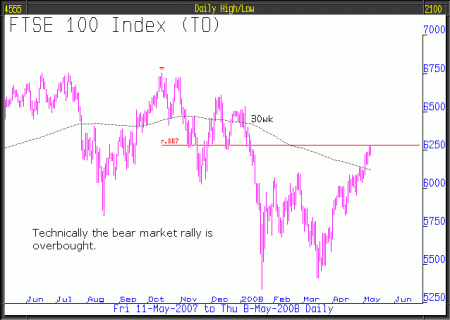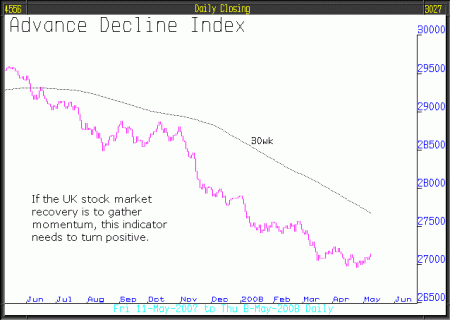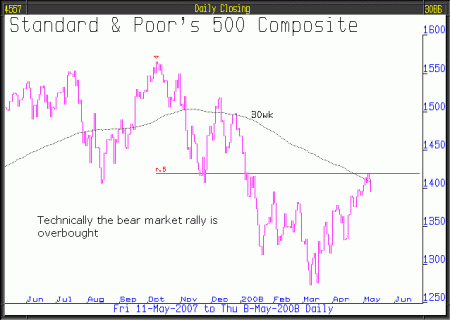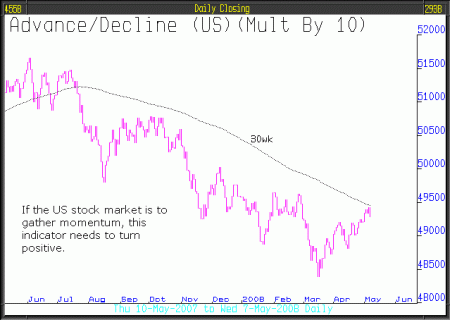If you have just read the news items, or if you haven't, do so now, you may well ask "Why has the stock market done so well since March when the news has been so bad?"
A possible answer to that testing question is to repeat JP Morgan's response. Whenever he was asked what the stock market was going to do, he usually answered "Vacillate old boy, vacillate!"
Although stock market moves in the short term are forever mysterious, there are some solidly established historical patterns of market behaviour. One of these is that every primary bear market is punctuated by periods of positive sentiment. Those sentiment swings invariably trigger meaningful rallies which are always heralded as the end to the bear market.
MoneyWeek
Subscribe to MoneyWeek today and get your first six magazine issues absolutely FREE

Sign up to Money Morning
Don't miss the latest investment and personal finances news, market analysis, plus money-saving tips with our free twice-daily newsletter
Don't miss the latest investment and personal finances news, market analysis, plus money-saving tips with our free twice-daily newsletter
So what are we seeing right now? Is it the end of the bear market and a return to bull market conditions, or is it a bear market rally?
Fundamental to the situation is the unavoidable truth that in the same way that the credit expansion fed asset market strength from 2003 until 2007; so the credit contraction creates economic conditions in which most asset prices will be eventually undone. Consumers' unwillingness to spend will be the inevitable consequence of falling asset values and tighter credit conditions - both of which are already glaringly evident.
The question that must be asked is how sustainable is this bear market rally. The answer to that question might be found by looking at market breadth. Lowry's are famous for the studies they do of market breadth and they have recently reported that the stock market rally since March has been predominantly driven by a lack of sellers and not, as is ultimately essential, by expanding investor demand.
Unless buyers step in, we would expect sellers on bad news to re-emerge from the sidelines and take advantage of the prices suddenly available, levels that seemed entirely unlikely in March when Bear Stearns was about to go bankrupt.
Alongside the chart for the UK All Share Index, is the Advance Decline Index chart, each day it registers the number of stocks whose prices have advanced against those that have declined. Unless we see a reversal in the established down-trend, it is hard to see how the stock market can sustain its rally. We also show charts for the S&P 500 together with the American Advance Decline Index which further underscores the vulnerability of the current rally.




When bull markets turn into bear markets some key economic condition must change; in this case, it was the credit expansion morphing into a credit contraction. Initially, stock markets fell, but in the short term, maybe excessively. As a general rule, you would expect a bear market rally to recover between half and two thirds of the initial move down and, more often than not, to simultaneously fail at the 30-week moving average (known in our office as the boom/bust line). This is exactly where we are now, in both of the above samples.
We find it utterly implausible that the credit contraction can end so soon, we find it even more implausible that if the credit contraction is to continue that stock markets can genuinely recover.
The speed of the deterioration of the UK housing market has left us breathless. Not surprisingly there have been varying estimates of how much it might decline. Lloyds TSB, the country's fourth largest lender, says 10%, whilst a recent study by Savills suggests as much as 25% over the next two years. If the current conditions persist, we would doubt even Savills' estimate.
For the moment there is a stand-off. Owners of unsold houses are asking unachievable prices and the few buyers out there are making unacceptable bids; as yet, there is no middle ground. There is a vacuum under the current perceived price level that could generate conditions in which house prices might plummet.
Those who have studied the market of fifteen years ago would know that the victims of the house price collapse then included many of the valuers who were sued by mortgage lenders for losses suffered as a result of alleged negligent valuations. Back then valuations usually came in at whatever figure the applicant had suggested.
Valuers won't make the same mistake again, this time round we expect that valuers are going to be hyper-cautious. So not only are the mortgage lenders cutting back on the percentage they will lend, but that percentage is a percentage of price or valuation whichever is the lower. Consequently, the mortgage offers being made to the few brave souls buying property will be even less than the suggested percentage limits imposed by the lender.
As we explained in the previous issue, number 569, consumers are the plankton of the financial food chain. For the property market, first-time buyers are the plankton of the property food chain and any of those with any brains in their head will, in our opinion, stay well away. First-time buyers will find, for the foreseeable future, that it is cheaper to rent than to buy and as we have explained before, that will probably remain the case until rental yields, the percentage rent represents of the property value, exceed 10% pa; currently yields are about 5% pa.
Yields will rise for two reasons: (1) more potential renters than landlords and (2) house prices will fall. So, over the coming period we will see higher rents and lower house prices leading to higher rental yields and ultimately a huge investment opportunity.
The Chinese stock market has, since the credit crisis started, lost 50% of its value, much more than the developed world's markets but the difference is that we consider that China's stock market is still a primary bull market. Accordingly, we cautiously sit on the sidelines waiting for the best opportunity to buy it.
By John Robson & Andrew Selsby at Full Circle Asset Management, as published in the threesixty Newsletter
Get the latest financial news, insights and expert analysis from our award-winning MoneyWeek team, to help you understand what really matters when it comes to your finances.
MoneyWeek is written by a team of experienced and award-winning journalists, plus expert columnists. As well as daily digital news and features, MoneyWeek also publishes a weekly magazine, covering investing and personal finance. From share tips, pensions, gold to practical investment tips - we provide a round-up to help you make money and keep it.
-
 How to protect property in a divorce – and the common mistakes to avoid
How to protect property in a divorce – and the common mistakes to avoidThe festive period can sadly push some marriages to breaking point, forcing couples to consider what will happen to their property after divorce.
-
 Why you fear money – and how to fix it: MoneyWeek Talks
Why you fear money – and how to fix it: MoneyWeek TalksPodcast MoneyWeek's digital editor, Kalpana Fitzpatrick, speaks to financial psychotherapist Vicky Reynal about how to change your money mindset for the better.

